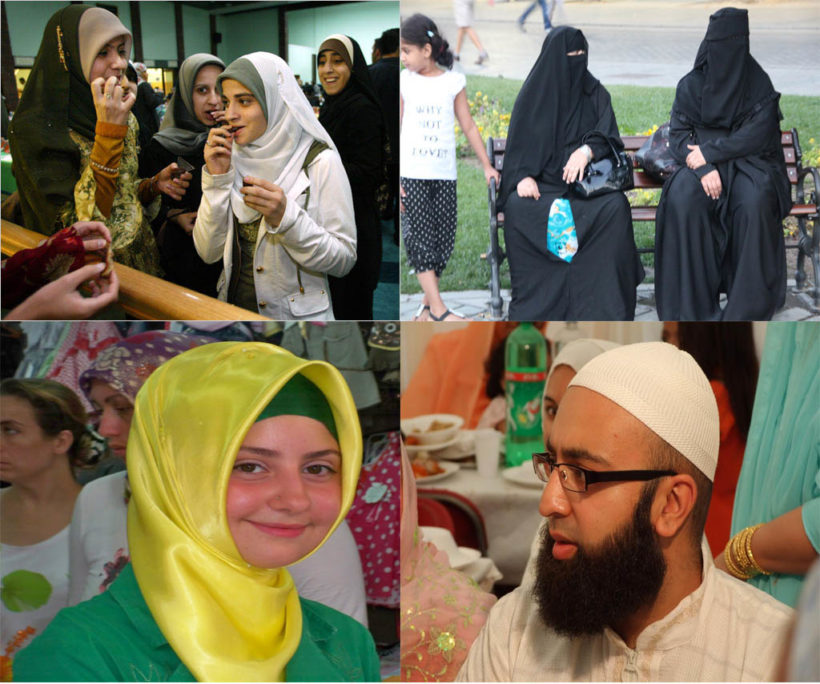The ban on wearing the hijab imposed by a school for girls in the city of Udupi has become a flashpoint over religious minority rights. The conflict began in September at a college preparatory institution for girls in Udupi, a city in southwestern Karnataka. When several Muslim students showed up in hijabs, some teachers whose class they tried to attend turned them away and marked them absent for the day.
In January, parents of five students petitioned the court to overturn the ban, arguing that it violated the girls’ right to an education and the free practice of their religion. In prior years, wearing headscarves at the school had not been an issue, according to one of the petitioners.
Last week, the government of Karnataka issued an order in support of the school’s hijab ban. The Karnataka government is controlled by the Bharatiya Janata Party, headed by Prime Minister Narendra Modi, a Hindu nationalist.
The high court’s final ruling on the ban could be days or weeks away. “We think it’s really unfair to ask Muslim women to suspend their faith for a few days while the court completes its hearing,” Fawaz Shaheen, national secretary of the Students Islamic Organization of India, a Delhi-based group with over 9,000 members, said of the court’s Thursday statement.
The students’ parents encouraged their daughters to stand their ground. They continued to wear the hijab even after the school Government Women’s PU, moved in January to ban it on campus, as it violated the school’s dress code.
Then the issue started blowing up. Whenever students would go in hijab, they wouldn’t be allowed inside the compound, too, let alone the classroom.”
In recent weeks, the students have been met at the campus gates by scores of boys and men wearing saffron — the color most associated with Hinduism, often worn by supporters of Hindu nationalism — and shouting slogans such as “Hail Lord Ram,” referring to the Hindu god.
Should Muslim students be allowed to wear religious garments to school and in so doing be allowed to freely express their religious beliefs?
Here is a statement of opinion and commentary by the NGO, Indian Muslims for Secular Democracy (IMSD):
Stop infecting college campuses with the communal poison: IMSD
Indian Muslims for Secular Democracy (IMSD) strongly condemns the attempt by Hindutva forces and the BJP government of Karnataka to engulf college and school campuses in the already raging communal fire in the state.
The issue of whether Muslim girls should or should not be permitted to wear hijabs in those pre-university colleges where a uniform dress code is in place is something to be sorted out between the agitating Muslim girls and the management of the concerned colleges. But virtually overnight the dispute has been converted into a Hindu vs Muslim conflict by the saffron scarves-clad pro-Hindutva boys taking to the streets. College campuses have thus been transformed into yet another playing field for the BJP and other right-wing Hindu majoritarians.
IMSD accepts the principle of uniforms for schools/pre-university colleges so long as they are religion-neutral and non-discriminatory. We strongly suspect, however, that the unilateral and abrupt decision of some pre-university colleges to bar entry in the classrooms of hijab-wearing Muslim girls is not inspired by lofty principles but a capitulation to divisive politics.
At the same time, IMSD disagrees with the claim of the agitating Muslim girls that their demand is in conformity with their Constitution-protected fundamental right to freedom of religion. While this may be the belief of the orthodox and patriarchal clerics, any number of modern-day Islamic scholars, men and women, rightly maintain that hijab has nothing to do with the teachings of the Quran and the Prophet. The veil, in other words, is not mandatory in Islam.
All that the Quran asks of both Muslim women and men is that they dress “modestly” and “decently”. Beyond that the Quran does not specify a particular dress code. The mode of dress of men and women in different countries and cultures is different. So long as they are “modest and decent” Muslims are free to adopt any style of dress.
It is noteworthy that the winds of change have been blowing across the Muslim world in recent decades. Even the otherwise highly controversial crown prince Mohammad Bin Salman of the erstwhile ultra-conservative Saudi Arabia has publicly pronounced, with the support of senior Saudi clerics, that women in his country need not wear head-cover (hijab) or the black full-body abaya so long as their attire is “decent and respectful”.
IMSD respects women’s right to choose how they dress. But this choice cannot be counter-posed to the right of school managements to prescribe a religion-neutral, non-discriminatory uniform in their campuses. Besides, we are not unaware of the obscurantists among Muslims imposing the hijab on 5-year-old girls.
IMSD calls upon all sections of Indian society to stand with the secular and progressive principles enshrined in our Constitution and strive to maintain peace and harmony in our campuses and society at large.










